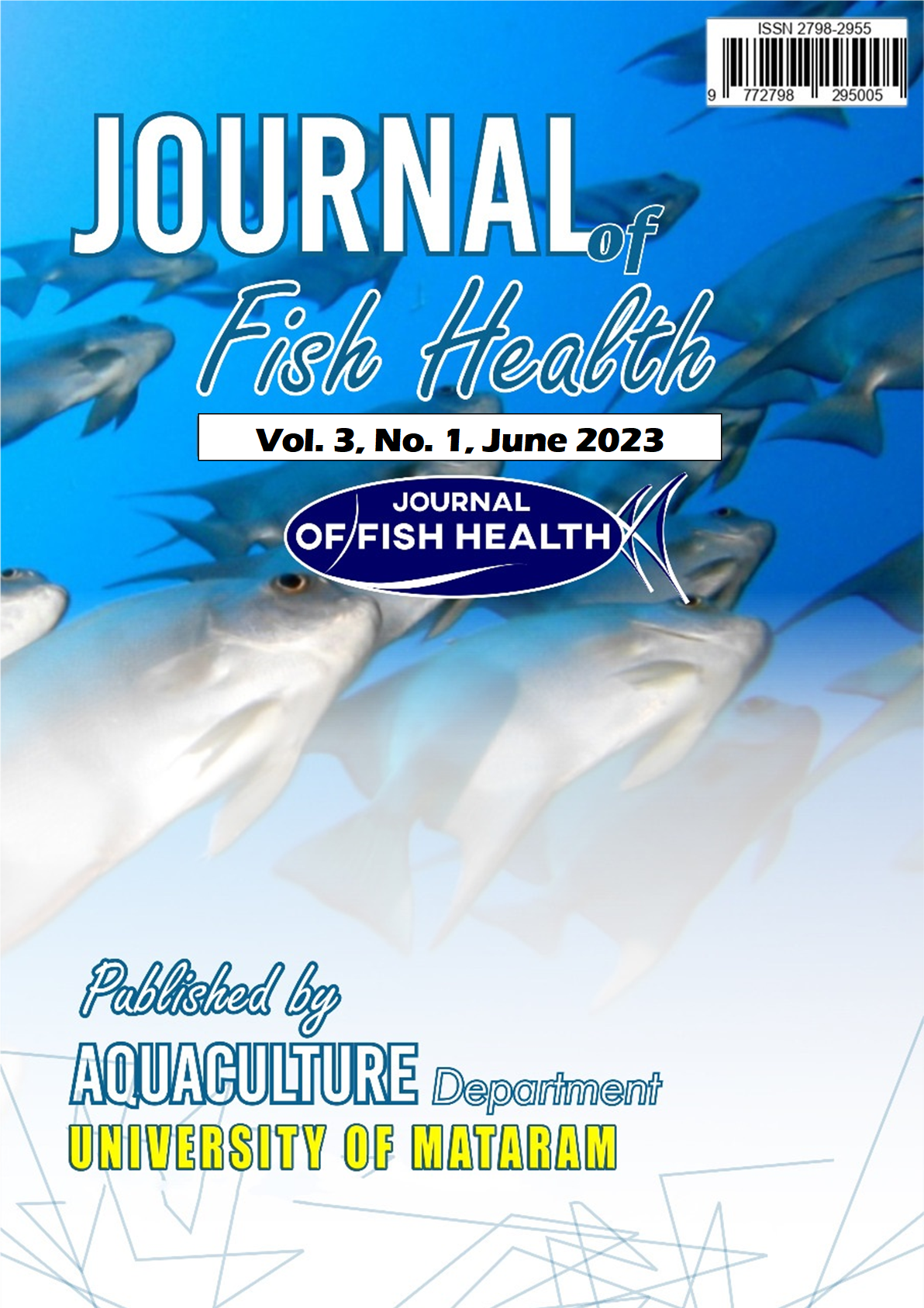THE USE OF GARLIC (Allium sativum) AS AN IMMUNOSTIMULANT IN AQUACULTURE
DOI:
https://doi.org/10.29303/jfh.v3i1.2751Keywords:
Allium sativum, fish, immunostimulantAbstract
The improvement of fish immunity is a critical factor in successful aquaculture. In recent years, the use of garlic (Allium sativum) as an immunostimulant has attracted researchers and farmers' interest in enhancing fish's health and disease resistance. This abstract discusses an overview of the use of garlic as an immunostimulant in aquaculture. Garlic is widely known for its antimicrobial, antioxidant, and immunostimulant properties. Several studies have evaluated the effects of garlic supplementation on various species of cultured fish. The results have shown that the administration of garlic in fish feed can enhance immune responses, such as increased immune enzyme activity and antibody production. Furthermore, active components in garlic, such as allicin and diallyl sulfide, have been proven effective against fish pathogens such as bacteria, viruses, and parasites. However, garlic as an immunostimulant in aquaculture still requires further research. Factors such as the appropriate dosage, interactions with farming conditions, and a deeper understanding of the underlying mechanisms must be considered. To optimise the use of garlic, further research is required to explore optimal dosages, interactions with environmental factors, and a better understanding of its effects on fish immune responses. In conclusion, garlic as an immunostimulant in aquaculture shows promising potential. The oral administration of garlic extract through the fish feed is capable of preventing infections by Aeromonas sp. and Aeromonas hydrophila in fish species such as Tawes, Catfish, Dumbo catfish, and Nile tilapia, while also enhancing non-specific immunity, such as increased total hematocrit, total haemoglobin, total erythrocytes, and phagocytic activity.
Downloads
Published
Issue
Section
License
1. The copyright of this journal belongs to the Editorial Board, based on the author's consent, while the moral rights of the publication belong to the author(s).
2. The formal legal aspect of journal accessibility refers to the same Creative Common Attribution + Noncommercial + ShareAlike (CC BY-NC-SA), implying that publication can be used for non-commercial purposes in its original form.
3. Every publication (printed/electronic) is open access for educational, research and library purposes. In addition to the objectives stated above, the editorial board is not responsible for copyright infringement















